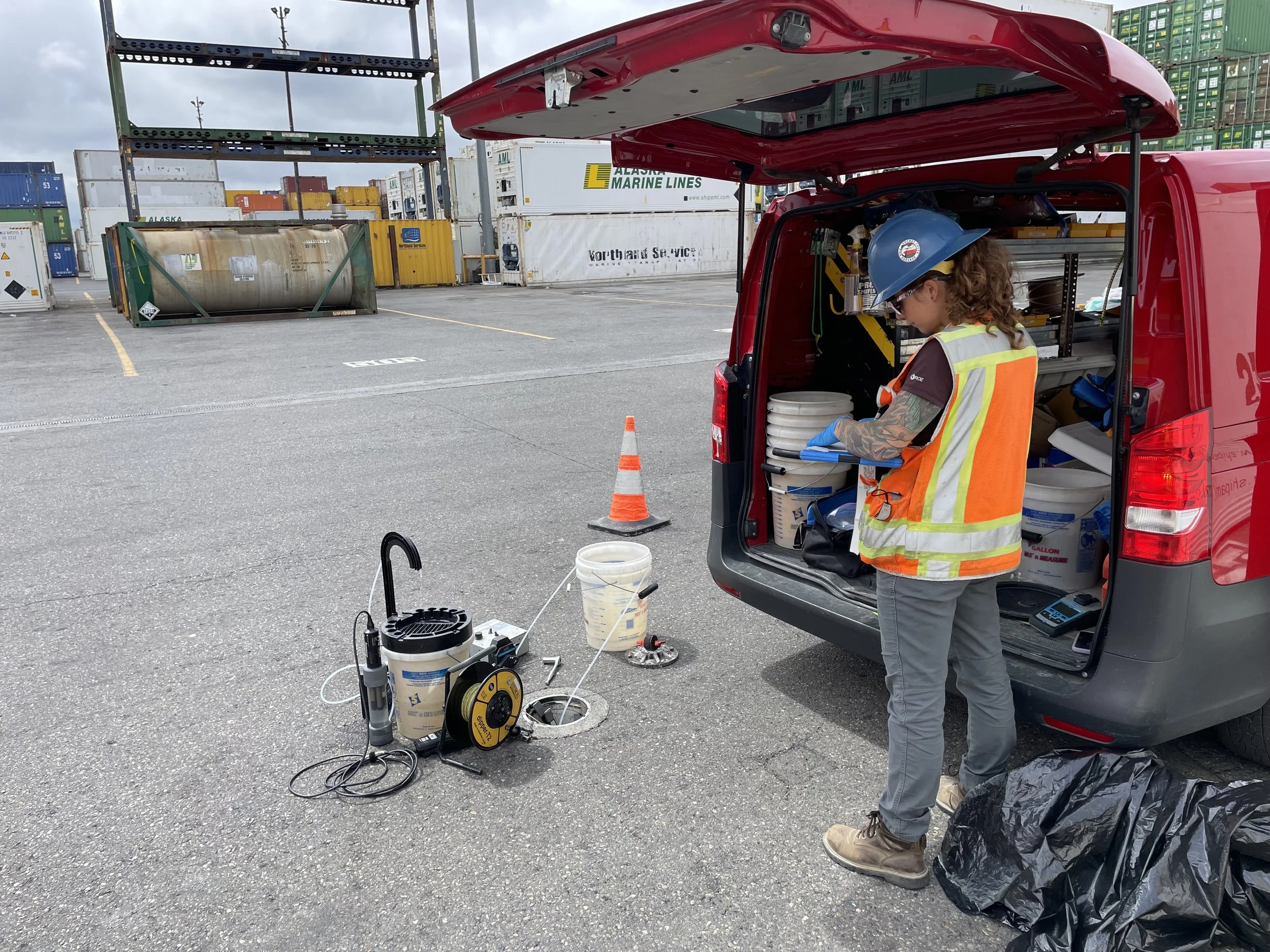Terminal 115 Environmental Cleanup Process: A Port of Seattle and Boeing Partnership
Quick Links
Site Map
The Terminal 115 Plant 1 Site (T-115 Site) is located in the industrial area along the western shore of the Lower Duwamish Waterway, at 6000 West Marginal Way SW, Seattle, Washington. The T-115 Site includes about 94 acres over a land parcel owned by the Port of Seattle.
The T-115 Site is located along the Lower Duwamish Waterway, which is a Superfund site with cleanup being led the U.S. Environmental Protection Agency.
Soil sample processing during August 2024 sonic drilling activities.
Latest Progress
In 2020, the Port of Seattle and Boeing signed a Washington State Department of Ecology Agreed Order to perform a Site investigation and consider potential cleanup needs.
In February 2024, the Washington State Department of Ecology approved the Remedial Investigation Work Plan.
In 2024, the project team conducted fieldwork to test for contamination. Crews collected soil samples by driving hollow rods into the ground with a drill machine. Samples were taken from the removed soil to test for contamination at different depths. Groundwater monitoring wells were installed using a sonic drill and water was pumped out for sampling. The fieldwork team advanced 96 soil borings and 42 groundwater monitoring wells.
By August 2025, a second round of fieldwork will include at least 15 additional soil and groundwater explorations.
In 2026 once the fieldwork is complete, the Port and Boeing will begin to assess the results to determine if and what type of cleanup actions may be needed.
Field staff monitor groundwater from installed wells
Remedial Investigation
The Port of Seattle and The Boeing Company have begun a remedial investigation process under an Agreed Order between the Port, The Boeing Company, and the Washington State Department of Ecology. During this process, samples of soil and groundwater are collected and analyzed to understand the extent of contamination and assess how it may have moved over time. This assessment may lead to the Port and Boeing developing cleanup alternatives for contaminated areas.
The Remedial Investigation process includes:
Reviewing current site use and previous site development history.
Collecting and analyzing soil and groundwater samples.
Evaluating the type and extent of contamination and any risks posed to human health or the environment.
Determining whether a remedial action is necessary to reduce risks.



